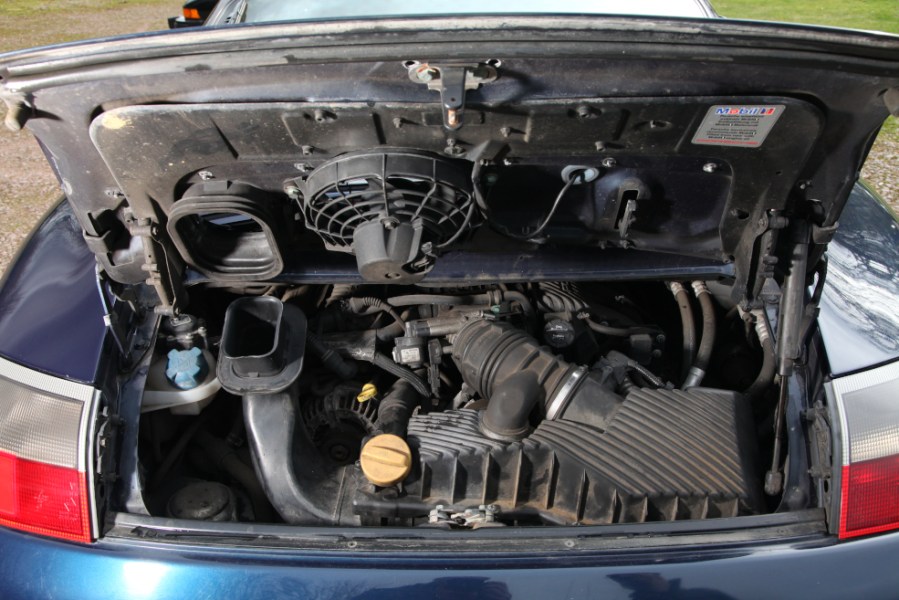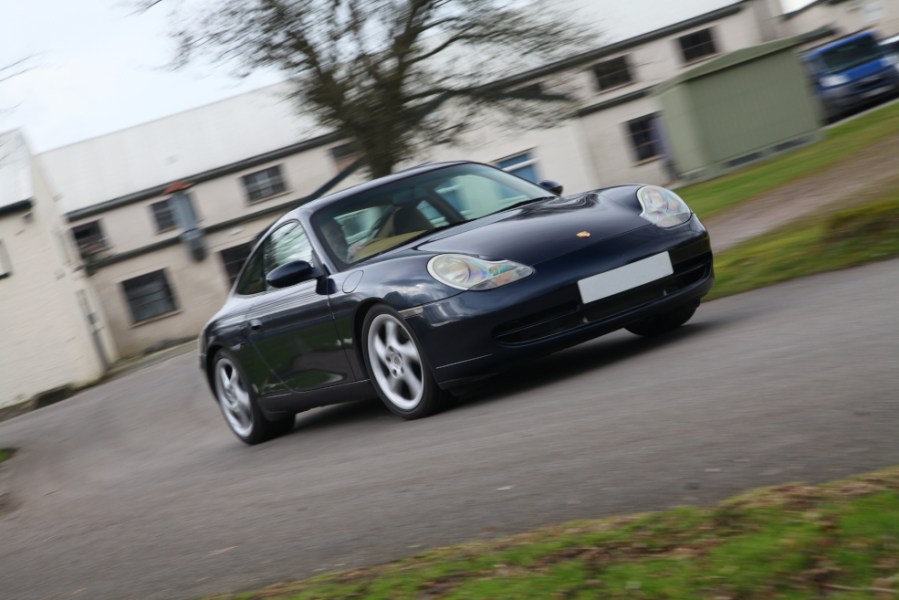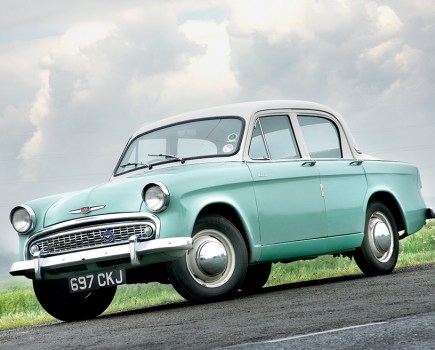The 996-generation Porsche 911 is a bargain these days, so with an eye to the future here’s what you need to know about buying one
Words: Paul Wager
In Porsche circles the 996 is the car which divides opinion. The coil-sprung 964 generation launched in 1989 might have been the first to significantly alter the original 1963 layout and the 993 generation which followed was the one to introduce a more modern appearance, but the 996 was the first generation to employ a water-cooled powerplant.
Air-cooled engines had been a 911 and Porsche signature since the company’s very beginnings, but by the 1990s emissions and noise regulations meant they were on borrowed time, which is why an all-new flat-six engine was developed.
Usefully for Porsche, the cost of this was partly borne by the Boxster which was developed in tandem with the 996, sharing the front end structure and engine, albeit turned 180 degrees in the Boxster to create a mid-engined layout.
It used a very different architecture from the air-cooled engine, with each crankcase half and its cylinders cast as one unit complete with the water jacket. A dry-sump oil system was retained but was integrated with the block under the title Integrated Dry Sump, meaning there was no separate engine oil tank. As expected, refinement and emissions were vastly improved, as was the power potential.
The 996 was launched in 1997, the range comprising coupe and convertible running the 3.4-litre, 297bhp engine and badged as Carrera, offered with either a six-speed manual or five-speed torque converter automatic marketed as Tiptronic with a basic ‘manual’ shift facility.
In July 1998, the Cabriolet model was introduced and in 1998, the four-wheel drive Carrera 4 was unveiled. In 1999 UK buyers could order the track-focused GT3 running a 3.6-litre, 360bhp version of the older ‘Mezger’ engine.
The big news came in 1999 when the 911 Turbo was announced, arriving in the UK in 2000, with standard four-wheel drive and a twin-turbocharged version of the Mezger motor good for 420bhp.
In 2000 the even more focused GT2 appeared in UK showrooms, a rear-drive homologation special offering 462bhp from the twin-turbo engine.
In 2001 the regular 996 was facelifted, gaining the Turbo headlights in a bid to differentiate it from the cheaper Boxster. The engine was enlarged to 3.6 litres and gained Variocam Plus variable valve timing for a headline figure of 320bhp. The range now included the semi-open Targa model and a wide-body option for the Carrera 4, badged as 4S.
In 2003, the GT3 reappeared in facelift guise with 381bhp and suspension tweaks, while Cabriolet versions of the Carrera 4S and Turbo became available. A new Turbo S model with 420bhp appeared in both coupe and Cabriolet guise, and if the original GT3 wasn’t hardcore enough for you, a new GT3RS was now available with 381bhp and 20kg shaved from its weight.
The 2004 model year also saw the introduction of the 911 Anniversary special edition. Based on the Carrera 2, it received a factory ‘Powerkit’ upgrade to 345bhp, with a sports exhaust and GT Silver paint. Meanwhile, the GT2 was uprated to 483bhp.
In 2004, the 996 started to bow out, with the 997 Carrera replacing the Carrera coupe and Cabriolet, although the Turbo and GT3 models would continue until the end of the year.
As a car to live with and enjoy, the 996 is very different from earlier 911s, more familiar to buyers coming from other high-end performance cars and featuring more conventional touches which buyers of BMW, Mercedes and similar would expect. The driving position and control layout for example is more conventional and less alien than the early Beetle-like air-cooled cars and the refinement was also improved to very modern levels, both in terms of the noise levels and the ease of driving.
This of course was a double-edged sword for Porsche which even as it attracted new owners to the brand saw the diehards sticking with their classic 911s. Not that it mattered to the bottom line though: Porsche shifted over 175,000 examples of the 996.
The more modern design and construction also means that the 996 is a lot more robust than the older generations and makes for a very easy car to live with today. That is, if you buy the right one so here’s what you need to know.

Bodywork
The 996’s bodyshell was galvanised which explains why they resist the British climate and road salt really very well. It’s also a useful pointer to cars which have been shunted and repaired which is something to suspect with a noticeably rusty example.
Having said that, these cars are older now and galvanising can only do so much to prevent rust, with stone chips and minor damage which breaks through the coating causing unsightly issues if left unattended.
Don’t necessarily be suspicious of a car which has had the nose repainted, since without a conventional grille they do tend to suffer from stone chips and 911 owners generally want to keep the cars looking smart. Do however be wary of a car which has a damp front boot, since it might well suggest the lid and seal have been disturbed after a front-end impact.
Make sure a Cabriolet roof motors up and down properly, since it’s a complicated system to set up properly and labour can get expensive if a specialist is needed. The plastic rear glass on pre-2002 cars can also crack and split as it clouds over and hardens with age, so check its condition and the cost of fitting a replacement. The glass window on later Cabriolets was in fact designed so that it can be replaced separately. If the Targa mists up on a damp day, that’s sadly not uncommon.
These cars do sit quite low, so take a look underneath to check for speed bump damage.

Engine and transmission
This will be the first concern of most potential owners, owing to the spread of urban myth and rumour surrounding the Intermediate Shaft bearing and the rear main seal of the M96 engine. Like overheating Triumph Stags and MGF head gaskets, this has been largely exaggerated online but it’s as well to be aware of the issue.
The Intermediate Shaft transfers drive to the camshafts from the crankshaft and it’s the supporting bearing which became the issue when Porsche switched from a dual to single-row bearing for the 2000 model year. Each end of the shaft drives one of the camshafts and it’s the end closest to the flywheel (ie the front of the car) which suffers, since there’s no provision for it to be lubricated by the engine oil and a sealed bearing is used. On the 996 engines, the bearing is accessible and can be replaced by an upgraded part as a preventative measure and it’s worth doing since a failure will cause further damage meaning an engine rebuild or replacement. It’s also said that hard-driven cars are less likely to suffer the problem, but all are agreed that frequent oil changes are a smart move.
The rear main crankshaft seal is also known to leak oil and although it’s more irritating than catastrophic, it’s worth changing to an uprated seal during a clutch replacement.
As well as being exaggerated over time, the problem has been known for so long that the majority of cars running around now will have had an uprated bearing fitted.
You might also hear scare stories of cracked cylinder liners on the 3.4 engine but again, this has been largely exaggerated and given the age of these cars, if it hasn’t happened yet then it’s probably not going to.
It’s also worth noting that these problems don’t affect the dry-sumped ‘Mezger’ engine in the Turbo and GT models which used a different oil system.
Elsewhere, make the usual checks you would with any car but do remember to check the cooling system, especially if you’re used to older air-cooled models. There are two radiators (one each side) which can be getting tired and weepy by now and it’s worth checking their condition as much as you can as well as the water hoses.
Both the manual and automatic boxes are strong units and problems should be obvious but when these cars were new the Tiptronic was – perhaps surprisingly – the more popular choice. Despite the marketing hype though it’s still a regular torque converter automatic box, so drive both to get a feel for whether you can live with the automatic in a car like this.
Despite the rear engine layout, clutch replacement on a manual car can be pricey: budget around £1000.

Suspension and brakes
It’s a conventional layout, employing MacPherson struts, coil springs and wishbones but high-mileage cars can be feeling tired by now after taking a pounding from potholed roads, with ageing balljoints, broken springs and rattling anti-roll bar links. Complete suspension arms including the balljoint are available for around £120 from the likes of Euro Car Parts and GSF, who can also supply anti-roll bar links and strut top mounts from stock. A set of decent aftermarket springs is around the £300 mark.
Brake discs are around £100 each for front discs in a quality brand with pads at £80 a set and again are generally a stock item.
Interior, trim and electrics
The 996 interior is a high-quality affair and lasts the years and miles well. Specialists advise to check for leaks around the standard-fit sunroof and it’s also worth trying the manual switch to raise the speed-activated rear spoiler.
It’s also not unknown for the steel cables operating the window regulators to fail, so a noisy or slow electric window may mean it’s time for a new one at £200 for a genuine part or £100 for a pattern part.
Upgrading the audio system to a modern screen-based setup requires relocating the heater controls to the lower console in order to accommodate a double-DIN unit, but a proper kit is available to do the job with a factory appearance as this was the arrangement on cars with the Porsche navigation system. It’s a nice DIY task which will update the car nicely.
Oh and check the air conditioning works. If it doesn’t then don’t accept the line that it ‘just needs a regas’.

Porsche 911 (996): our verdict
Porsche traditionalists may have scoffed at the dumbing down which created the 996 but the truth was that it was technically the best 911 there had ever been, extending the appeal of the rear-engined Porsche to a whole new market while also spawning the cheaper Boxster which is credited as the car which saved Porsche as an independent car maker.
As to which of the 996s is the best bet, then leaving aside the exotic GT and Turbo models, the decision comes down to three basic choices: tin top or Cabriolet, manual or Tiptronic and two or four-wheel drive.
Early iterations of the Carrera 4 were criticised for numb, understeering handling but the 996 generation was much more warmly regarded and there’s no denying that the driven front wheels do make the car a whole lot less tricky to drive hard, especially in winter. If you plan to use your 911 all year round, the all-wheel drive is worth having, the trade-off being a 55kg weight penalty and a slightly smaller front boot.
As for the transmission, the Tiptronic is perfectly fine but remember, it’s just a regular automatic with a fancy name. Keen drivers wanting to capture something of the classic 911 will want a three-pedal Porsche.
Which leaves the choice of open or closed 911 and here it’s very much a personal decision, although the rear seats in the Cabriolet are even more cramped than the coupe: for small children, small dogs and coats only. At which point, the Targa suddenly starts to make a case for itself.
The best value of the lot has to be the coupe, preferably in manual Carrera 4 form and if the budget stretches to it, the wide-bodied S trim.
Whatever you end up with though, it’s almost inevitable that values of the nicer examples will rise sufficiently to get you your money back once you’ve had your fun.
Porsche 911 (996) timeline
1997
Porsche 996 launched at the Frankfurt show. On sale in the UK from October
1998
Cabriolet and Carrera 4 launched in October
1999
GT3 launched in the UK
2000
996 Turbo on sale in the UK from June. GT2 launched
2001
Facelifted 3.6-litre 996 available in the UK from December, alongside Carrera 4S and Targa. Cabriolet gains glass rear window
2003
Carrera 4S Cabriolet available in the UK from May. Carrera Anniversary special edition produced. Turbo Cabriolet available in the UK from June
2004
Turbo S on sale in the UK from June as coupe and Cabriolet





